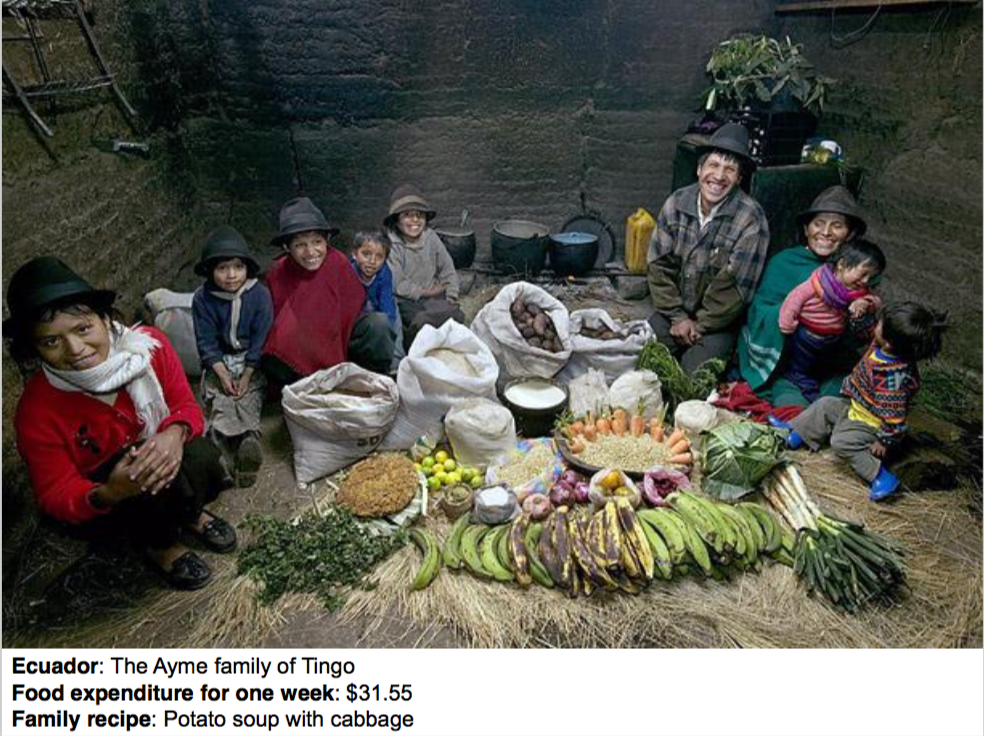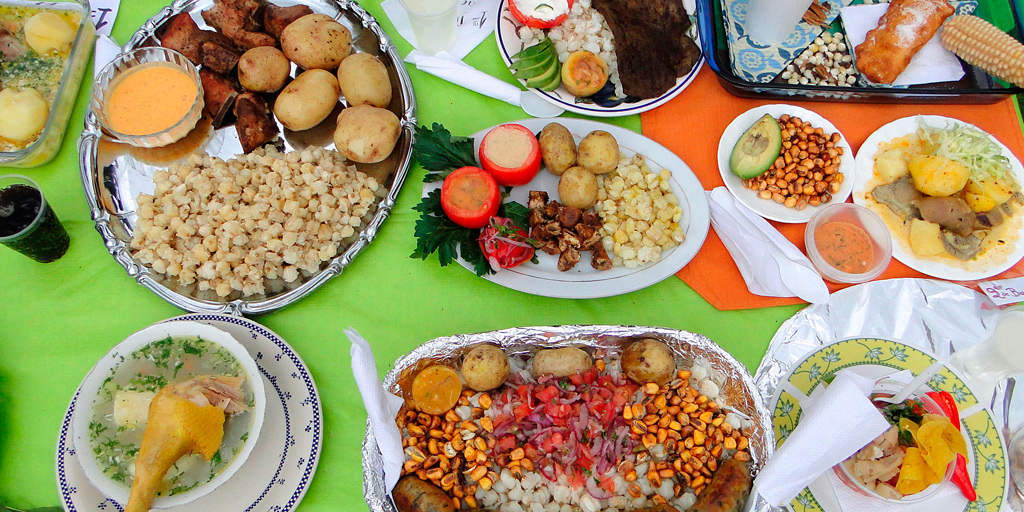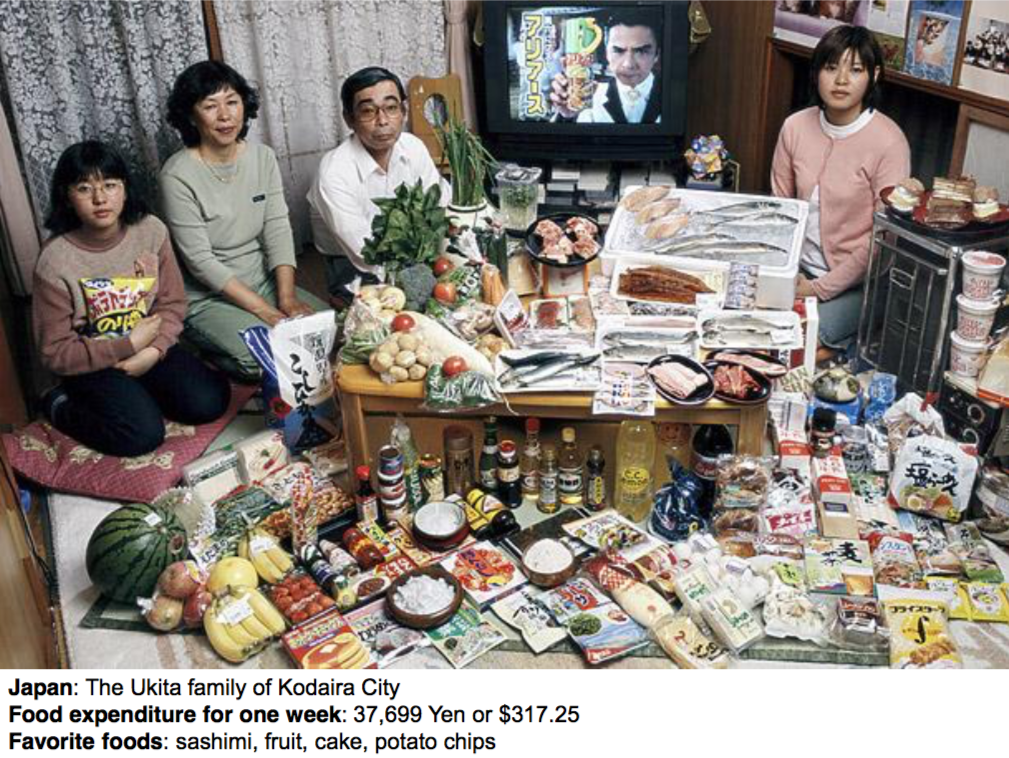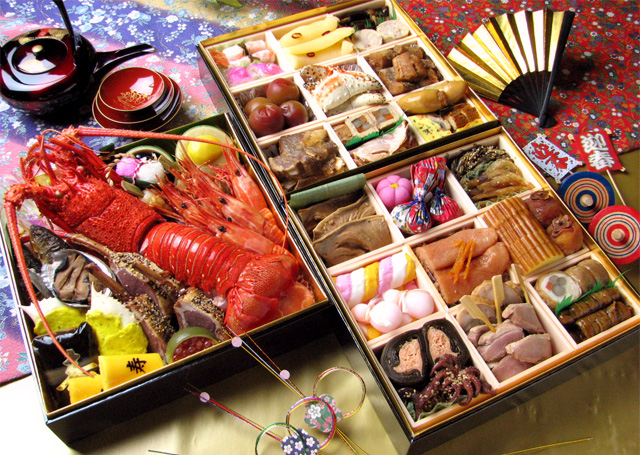The wide range of families and diets portrayed by Menzel and D’Alusio’s illustrate both the diversity in cultural foods, while also highlighting the wide spread disparities. When looking at the dietary contents of the various cultures, a striking number of cultures were consuming a lot of processed and pre-packaged foods, this was more prevalent in areas that would typically be considered more affluent. While food shortages and scarcity characterize much of the developing world, the food they do consume is much more in line with their traditional diet. In contrast, the more affluent groups are consuming a higher proportion of processed foods which are less nutritious and have a larger ecological footprint.

The two families compared here both appear to be managing to provide adequate food to their members, but the ecological impact, nutrition, health, and cultural aspects of their diets vary greatly. International institutions are central to the fundamental differences in how these families live and eat. With the monetization of all aspects of human life we see disproportionate regulation in affluent nations in comparison to the health and living standards in developing countries which is a direct result of these incentive structures (Allyn and Bacon, 235). The neoliberalization of our economic systems has pushed for international trade and structures that were supposedly intended to stabilize and help the global community. With the WTO, World Bank, and OETC in the drivers seat, we see agricultural trade liberalization being promoted as a means to create food security (Jennifer Clapp,90) while simultaneously enclaving non-participating states with high tariffs and trade embargoes.
Hungry Planet Images

Typical Ecuadorian Dishes
The Ayme Family in Tingo Ecuador consists of 9 members and spends $31.55 on food per week. Their home does not appear to have any furniture, electricity, or indoor plumbing of any sort. Their food appears to be cooked above a wood fire in iron pots. With no modern conveniences, and a simplistic space used by a large number of family members the western perspective would label this as poverty. With little reference for the cost of food or range of incomes in Ecuador it is difficult to determine the socio-economic disparities on a local scale.

Hungry Planet Images
In contrast to the Ayme family, we see the Ukita family of Kodaira Japan with 4 members and a weekly budget of $317.25 for food. Although the space might appear small by American standards, the high population of Japan lends itself to dense housing. The living room has all of the modern amenities that would be expected in a middle-income home that is within an affluent country. Kodaira is a city that is located within the contiguous urban area of Tokyo, which is the largest in the world. Japan is noted as being expensive by international standards for food and living expenses which I can personally attest to from my own visits, including to this specific region.

Typical Japanese Dishes

Thanks on your marvelous posting! I seriously enjoyed reading it, you can be a great author.I will be sure to bookmark your blog and will come back sometime soon. I want to encourage you to continue your great posts, have a nice morning!